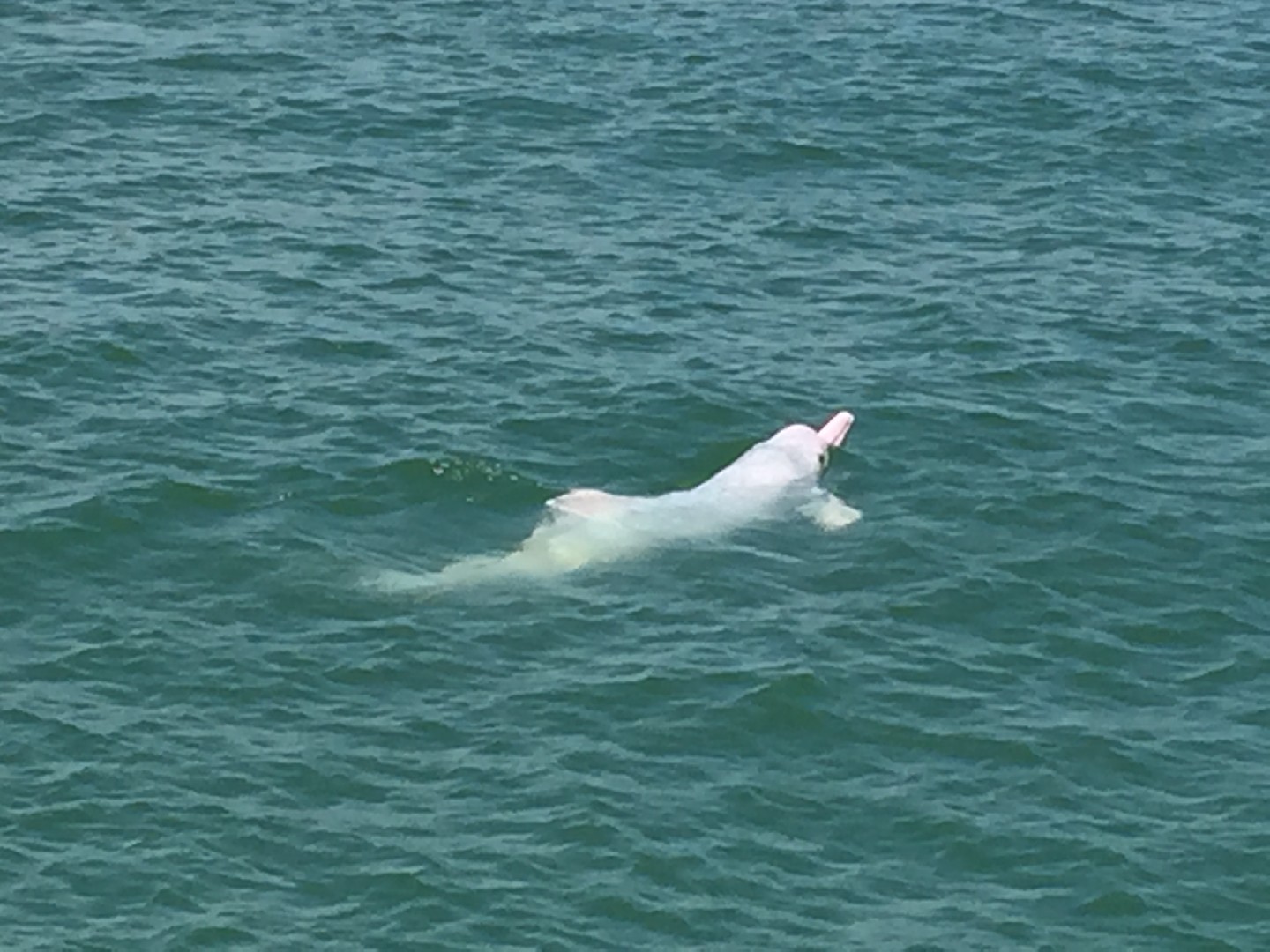Indo-pacific humpback dolphin
A species of Humpback dolphins Scientific name : Sousa chinensis Genus : Humpback dolphins
Indo-pacific humpback dolphin, A species of Humpback dolphins
Scientific name: Sousa chinensis
Genus: Humpback dolphins
Content
Description People often ask General Info
 Photo By Leonard Reback , used under CC-BY-SA-4.0 /Cropped and compressed from original
Photo By Leonard Reback , used under CC-BY-SA-4.0 /Cropped and compressed from original Description
An adult Indo-Pacific humpback dolphin is gray, white or pink and may appear as an albino dolphin to some. Uniquely, the population along the Chinese coast has pink skin, and the pink colour originates not from a pigment, but from blood vessels which were overdeveloped for thermoregulation. The body length is 2 to 3.5 m (6 ft 7 in to 11 ft 6 in) for adults 1 m (3 ft 3 in) for infants. An adult weighs 150 to 230 kg (330 to 510 lb). Indo-Pacific humpback dolphins live up to 40 years, as determined by the analysis of their teeth. At birth, the dolphins are black. They change to grey, then pinkish with spots when young. Adults are gray, white or pink. 
People often ask
General Info
Lifespan
30-40 years
Diet
Indo-pacific humpback dolphin is primarily piscivorous, feeding mostly on small fish. It also exhibits a preference for squids, krill, and occasionally crustaceans, thus demonstrates a broad pattern of opportunistic feeding.
Appearance
Indo-pacific humpback dolphin is a medium-sized dolphin with a slender, cylindrical body and a rounded head that lacks a distinct beak. The species boasts smooth, rubbery skin, varying in color from pinkish-gray to white. Notable traits include a dorsal fin positioned center-back, which is distinctly triangular, as well as long, slim fins. Male indo-pacific humpback dolphin are marginally larger and lighter in color than females and juveniles.
Behavior
Indo-pacific humpback dolphin is a highly social species, forming large pods for cooperative feeding and protection. Exhibiting diurnal behavior, it spends days foraging for fish and invertebrates, utilizing echolocation skills. It exhibits aerial behavior, including breaching and tail-slapping, possibly for communication or dislodging parasites. Indo-pacific humpback dolphin doesn't aggressively guard territories but has seasonal migrations related to prey availability.
Population
Decreasing
Scientific Classification
Phylum
Chordates Class
Mammals Order
Whales and dolphins Family
Oceanic dolphins Genus
Humpback dolphins Species
Indo-pacific humpback dolphin